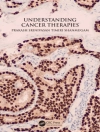Cardiovascular disease is the major cause of mortality and morbidity in the Western Hemisphere. While significant progress has been made in treating a major sub-category of cardiac disease, arrhythmias, significant unmet needs remain. In particular, every day, thousands of patients die because of arrhythmias in the US alone, and atrial fibrillation is the most common arrhythmia affecting millions of patients in the US alone at a given time. Therefore, there is a public need to continue to develop new and better therapies for arrhythmias. Accordingly, an ever increasing number of biomedical, pharmaceutical, and medical personnel is interested in studying various aspects of arrhythmias at a basic, translational, and applied level, both in industry (ie Biotech, Pharmaceutical and device), and in academia. Not only has our overall understanding of molecular bases of disease dramatically increased, but so has the number of available and emerging molecular, pharmacological or device treatment based therapies. This practical, state-of-the art handbook will summarize and review key research methods and protocols, their advantages and pitfalls, with a focus on practical implementation, and collaborative cross-functional research. The volume will include visual and easy-to-use graphics, bulleted summaries, boxed summary paragraphs, links to reference websites, equipment manufacturers where appropriate, photographs of typical experimental setups and so forth, to keep this book very focused on practical methods and implementation, and yet, provide enough theory that the principles are clearly understood and can be easily applied.
Tabella dei contenuti
Clinical Cardiac Electrophysiology: An Overview of Its Evolution.- Clinical Cardiac Electrophysiology: An Overview of Its Evolution.- Overview.- Basic Cardiac Electrophysiology: Excitable Membranes.- Cardiac Action Potentials, Ion Channels, and Gap Junctions.- Anatomy and Physiology of the Cardiac Conduction System.- The Electrocardiogram and Clinical Cardiac Electrophysiology.- Methods and Models.- Principles of Electrophysiological In Vitro Measurements.- Cardiac Cellular Electrophysiological Modeling.- Computer Modeling of Electrical Activation: From Cellular Dynamics to the Whole Heart.- Detection and Measurement of Cardiac Ion Channels.- Cell Culture Models and Methods.- Isolated Tissue Models.- Isolated Heart Models.- Small Animal Models for Arrhythmia Studies.- Use of Large Animal Models for Cardiac Electrophysiology Studies.- Optical Mapping and Calcium Imaging.- Electrophysiology of Single Cardiomyocytes: Patch Clamp and Other Recording Methods.- Invasive Electroanatomical Mapping and Navigation.- Cardiac Electrophysiological Imaging: Solving the Inverse Problem of Electrocardiography.- Traditional Electrophysiological Mapping.- Multi-channel System for Analysis of Cardiac Rhythmicity and Conductivity In Vitro.- Cardiac CT/MRI Imaging for Electrophysiology.- Putting It All Together.- to Translational Research.- Clinical Perspective: Electrophysiology in the Young and Patients with Congenital Heart Disease.
Circa l’autore
Daniel C. Sigg, MD, Ph D is Adjunct Assistant Professor of Integrative Biology and Physiology, University of Minnesota, Minneapolis, MN, USA Paul A. Iaizzo, Ph D Ph D is Professor of Surgery, Integrative Biology and Physiology and The Carlson School of Management, he is also Director of Education of the Lillehei Heart Institute and Associate Director for the Institute for Engineering in Medicine, he also holds the Medtronic Professorship for Visible Heart Research , University of Minnesota, Minneapolis, Minnesota, USA Yong-Fu Xiao, MD, Ph D is Principal Scientist at Medtronic, Inc., New Therapies & Diagnostics Management, Cardiac Rhythm Disease Management, Mounds View, MN, USA Bin He, Ph D is Distinguished Mc Knight University Professor and Professor of Biomedical Engineering, University of Minnesota, Minneapolis, MN, USA












